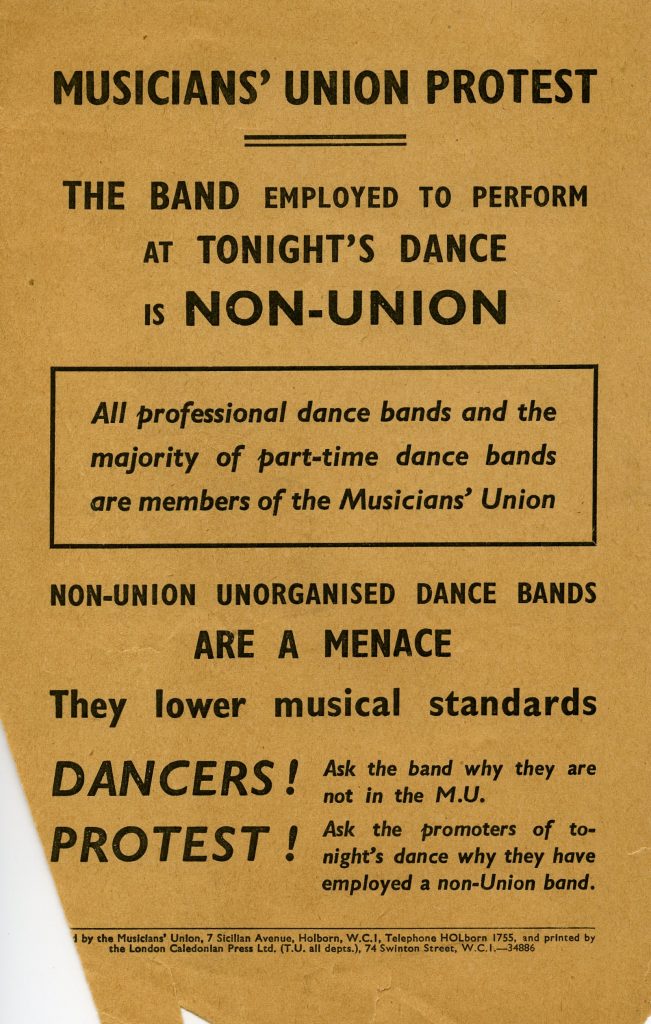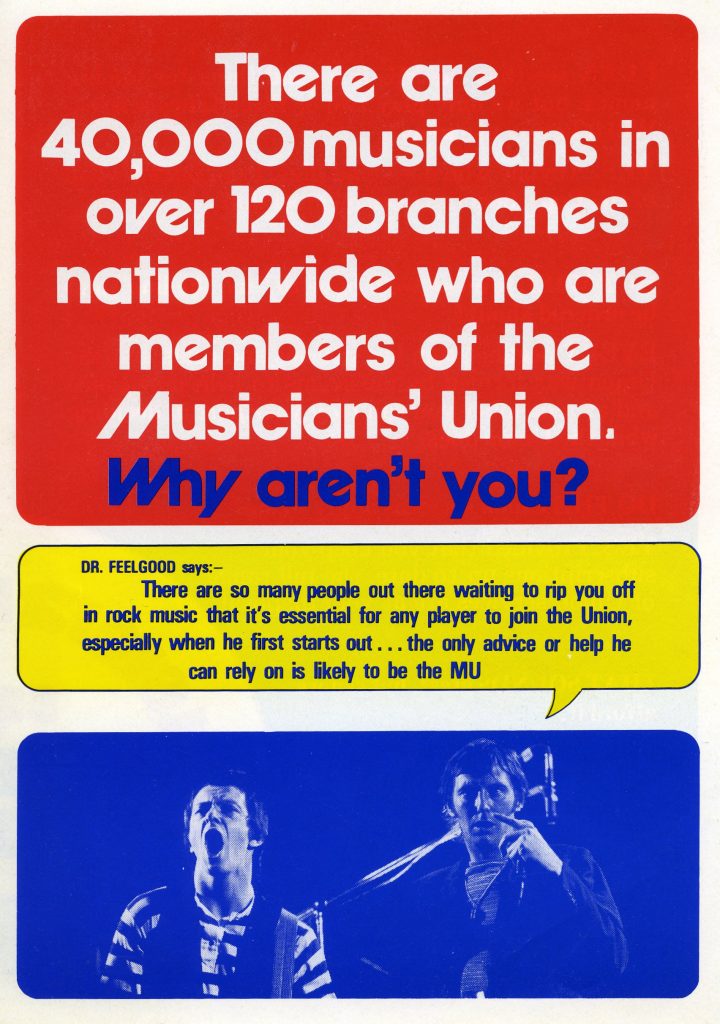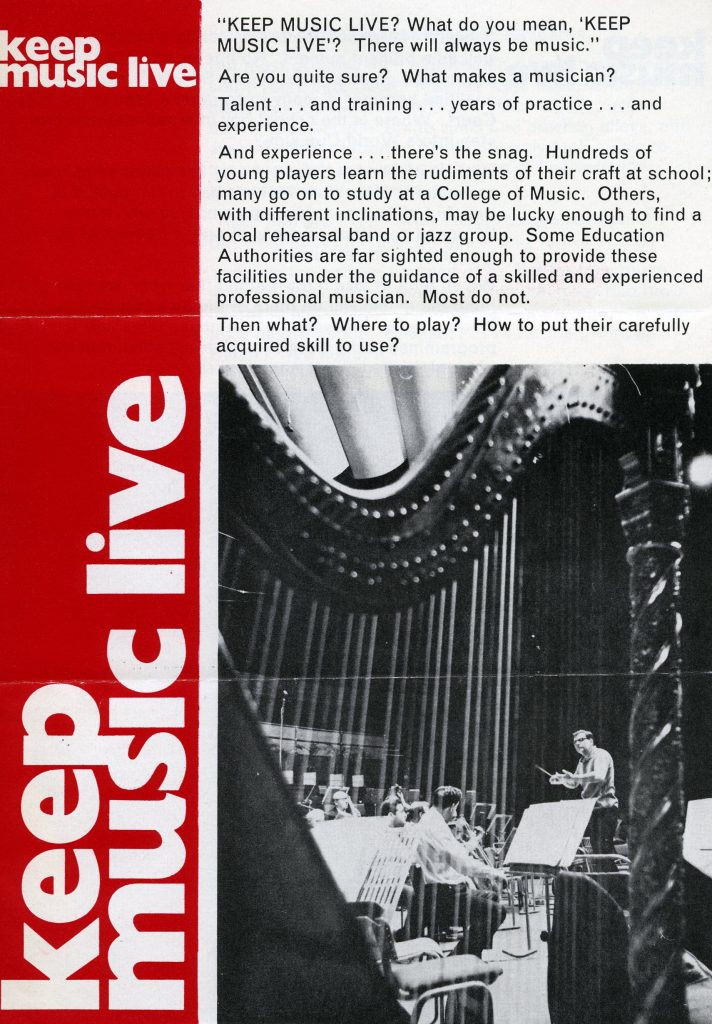To celebrate the addition of 100+ digitised leaflets to our new Musicians’ Union catalogue we present our Top 5 from the archive
5. Dancers! Protest! (undated)
The 1930s were a challenging time for members of the MU. The arrival of the ‘talkies’ had removed cinema orchestras as a dependable source of employment almost overnight. Many of the union’s orchestral members were forced instead to adapt to playing music for dancing in the growing ‘dance band’ scene which provided entertainment in cafes, restaurants and ballrooms. However they found themselves facing competition from both foreign musicians and non-union bands. The union mobilised its members on many occasions to protest against non-union entertainment on offer in venues across the country. The impact of leaflets such as this example on the dancing public is not recorded.

4. The MU can help you break out of your bedroom (1992)

The MU has often had a troubled relationship with technology and its impact of the livelihood of musicians. From gramophone records in the 1920s to increasingly sophisticated synthesisers in the 1970s new ways of producing and playing music were generally perceived as threats. By the start of the 1990s however the union was embracing the musical potential of technology. Dance music and DJ culture had become a firmly established element of the music industry and the MU was keen to support emerging talent as it had done in the 1960s when it shifted its focus to supporting rock & roll bands. This leaflet brings together an impressive line-up of artists to promote the union to a whole new audience of potential members.
3. Join the Musicians’ Union (1930)
The 1920s were a period of crisis for the union which had to deal with a variety of threats to its members livelihoods including technological change, the decline of silent cinema which required live musical accompaniment, and increasing competition from military bands and foreign musicians. The 1930s saw a renewed membership drive focusing in particular on the dance bands which were providing a lucrative new opportunity for musicians. This four page leaflet strikes an optimistic tone, noting that opportunities of employment are increasing and pointing out that ‘those who argued that the Modern Dance Combination was just a passing phase have lived to see it rise to financial heights undreamt of in the old days.’

2. Dr Feelgood says… (1976)

Over the years a range of popular musicians have lent their support to the MU’s promotional campaigns. From the 1960s onwards leaflets have featured an eclectic selection of performers including Spencer Davis, The Hollies, Sting, Nik Kershaw, Stereo MCs and The Shamen. In 1976 the union’s poster boys were Canvey Island’s own R&B rockers Dr Feelgood. The striking leaflet provides a statement of the union’s strength: ‘There are 40,000 musicians in over 120 branches nationwide who are members of the Musicians’ Union. Why aren’t you?’ with Dr Feelgood warning ‘there are so many people out there waiting to rip you off in rock music.’
1. Keep Music Live (1966)
With its striking badges, bumper stickers and banners the Keep Music Live campaign has been a core part of its union’s activities for over 50 years. A slogan which encapsulates the union’s support for the live music sector, it initially appeared on the cover of its members diary for 1959. By the mid 1960s the campaign was fully developed, this leaflet providing a key element of the promotional activity. The four page leaflet features the BBC Symphony Orchestra, The Hollies and Ronnie Scott highlighting the range of live music the union was supporting across orchestras, pop and jazz. An article in the January 1966 issue of The Musician provides full details of the launch of the Keep Music Live campaign – a digitised copy is available to view on our new website.

The ephemeral nature of leaflets means we have many gaps in our collection. There are tantalising mentions in the archive to other leaflets such as those handed out to cinema goers in the late 1920s opposing the introduction of the ‘talkies’ – we would love to add some examples of these items to the collection.
The digitisation of this set of leaflets was made possible through the generous support of the Musicians’ Union.
